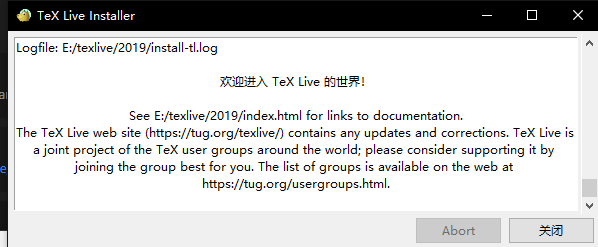1
2
3
4
5
6
7
8
9
10
11
12
13
14
15
16
17
18
19
20
21
22
23
24
25
26
27
28
29
30
31
32
33
34
35
36
37
38
39
40
41
42
43
44
45
46
47
48
49
50
51
52
53
54
55
56
57
58
59
60
61
62
63
64
65
66
67
68
69
70
71
72
73
74
75
76
77
78
79
80
81
82
83
84
85
86
87
88
89
90
91
92
93
94
95
96
97
98
99
100
101
102
103
104
105
106
107
108
109
110
111
112
113
114
115
116
117
118
119
120
121
122
123
124
125
126
127
128
129
130
131
132
133
134
135
136
137
138
139
140
141
142
143
144
145
146
147
148
149
150
| \documentclass{article}
\usepackage{braket}
\usepackage{geometry}
\geometry{letterpaper,scale=0.85}
\usepackage{authblk}
\usepackage{amsfonts}
\usepackage{mathrsfs}
\usepackage{amsmath}
\usepackage{amsopn}
\usepackage{amssymb}
\usepackage{caption}
\usepackage{graphicx}
\usepackage{subcaption}
\usepackage[colorlinks=true,linkcolor=blue,anchorcolor=blue,citecolor=red]{hyperref}
\usepackage[title,titletoc,header]{appendix}
\usepackage{tabularx}
\usepackage{makecell}
\usepackage{booktabs}
\usepackage{longtable}
\usepackage{float}
\usepackage{indentfirst}
\setlength{\parindent}{2em}
\usepackage{listings}
\usepackage{xcolor}
\usepackage{enumerate}
\usepackage{enumitem}
\usepackage{animate}
\usepackage{tikz}
\usetikzlibrary{shapes,arrows}
\usepackage[en-GB]{datetime2}
\newcommand{\degree}{^\circ}
\newcommand{\myvec}[0]{\overrightarrow}
\newcommand{\sat}{\operatorname{sat}}
\newcommand{\rank}{\operatorname{rank}}
\DeclareMathOperator*{\argmax}{arg\,max}
\DeclareMathOperator*{\argmin}{arg\,min}
\newtheorem{assumption}{Assumption}
\newtheorem{lemma}{Lemma}
\tikzstyle{block} = [draw, fill=white, rectangle,
minimum height=3em, minimum width=6em]
\tikzstyle{sum} = [draw, fill=white, circle, node distance=1cm]
\tikzstyle{input} = [coordinate]
\tikzstyle{output} = [coordinate]
\tikzstyle{pinstyle} = [pin edge={to-,thin,black}]
\allowdisplaybreaks[4]
\lstset{
breaklines,
columns=flexible,
numbers=left,
numberstyle=\tiny\color{gray},
frame=none,
backgroundcolor=\color[RGB]{245,245,244},
keywordstyle=\color[RGB]{40,40,255},
numberstyle=\footnotesize\color{darkgray},
commentstyle=\it\color[RGB]{0,96,96},
stringstyle=\rmfamily\slshape\color[RGB]{128,0,0},
showstringspaces=false,
language=Matlab,
}
\title{Title}
\author{Name}
\begin{document}
\maketitle
\section{Section Sample}
\subsection{Subsection Sample}
Table:
\begin{table}[htbp]
\centering
\caption{table caption 1}
\begin{tabularx}{.6\textwidth}{X<{\centering}|X<{\centering}|X<{\centering}}
first column & second column & third column \\
\hline
1 & 2 & 3 \\
\end{tabularx}
\caption{table caption 2}
\begin{tabular}{ccc}
\toprule
first column & this is a very very long sentence & third column \\
\midrule
item 1 & item 2 & item 3 \\
\bottomrule
\end{tabular}
\end{table}
Enumerate:
\begin{enumerate}[label*=\arabic*.]
\item Topic
\begin{enumerate}[label*=\arabic*.]
\item First Subtopic
\item Second Subtopic
\begin{enumerate}[label*=\arabic*.]
\item First Sub-Subtopic
\item Second Sub-Subtopic
\end{enumerate}
\end{enumerate}
\end{enumerate}
Tikzpicture:
\begin{center}
\begin{tikzpicture}[auto, node distance=2cm,>=latex']
\node [input, name=input] {};
\node [sum, right of=input] (sum) {};
\node [block, right of=sum] (controller) {Controller};
\node [block, right of=controller, pin={[pinstyle]above:Disturbances},
node distance=3cm] (system) {System};
\draw [->] (controller) -- node[name=u] {$u$} (system);
\node [output, right of=system] (output) {};
\node [block, below of=u] (measurements) {Measurements};
\draw [draw,->] (input) -- node {$r$} (sum);
\draw [->] (sum) -- node {$e$} (controller);
\draw [->] (system) -- node [name=y] {$y$}(output);
\draw [->] (y) |- (measurements);
\draw [->] (measurements) -| node[pos=0.99] {$-$}
node [near end] {$y_m$} (sum);
\end{tikzpicture}
\end{center}
\end{document}
|






